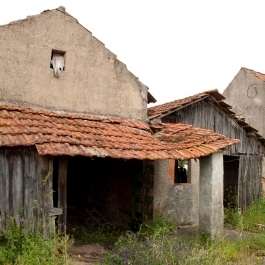
Updating Older Homes
Your older home isn’t this dilapidated, of course, but you may think your piping is if your home was built in the 1960s or earlier.
There’s a lot of good to be said about older homes: they have lots of charm. They often are built better than newer homes. They have history – if not history, at least the history of the families that once lived there.
But they also can have plumbing issues simply because their plumbing is older. Any home built in the 1960s or earlier that still has its original plumbing is a house with plumbing that more than likely is on its last hurrah.
Why? Because most piping used for plumbing before the ‘60s was made of galvanized steel. Chances are, if the home you’re thinking of buying is from the ‘60s or earlier, its plumbing is either a time bomb waiting to go off, or it’s had so many problems in recent years, that more recent owners had to re-plumb the house.
Main Plumbing Problems With Older Homes
Four of the main plumbing problems found in older homes are:
1. Those galvanized steel pipes. Hot water pipes in a house with galvanized steel plumbing usually are the first to go. To test if this is the case in your house, turn on the hot water. If you find that the pressure is low, it’s a) a good indication that the house has galvanized steel pipes, and b) a sign that the pipes have plugged up from corrosion.
Even if the water pressure is good, galvanized pipes somewhere in the house more than likely are plugged up/corroded. Some of the piping in the worst shape probably has been replaced, leaving you with plenty of galvanized piping to bring you problems.
Many homeowners decide to replace old galvanized pipes as needed because replacing the whole system can be very expensive.
To get a better picture of the state of your piping, check under the home’s sinks. Because plumbers often run new piping up and through floors instead of through a wall, you should be able to see if you have new pipes. You also can take in the house’s crawl space (if it has one) to take a look at the state of the house’s plumbing.
2) Small vent pipes. Many of these pipes in older homes were just about two inches in diameter (today’s vents tend to be about three inches in diameter). Smaller vent pipes mean that your drainage is slower, possibly causing problems.
3) You also should remove all polybutylene and lead water supply pipes. Do this no matter how old the piping is. Lead pipes can leach toxins into your drinking water, while polybutylene – used often in homes built in the 1970s and 1990s, can break easily as they get older.
4) Keep an eye on your plumbing for signs of leaks. If your home is 50 years or older and the piping hasn’t been replaced, a small leak is a good sign it’s time to replace it. One or two leaks here and there are signs that more leaks in other places are on their way.
Is it time to take care of the plumbing in your older home? If so, call the plumbing replacement and installation experts at Plumbing Dynamics. Call us at 214-929-3431 or send us an e-mail using our online contact form.

